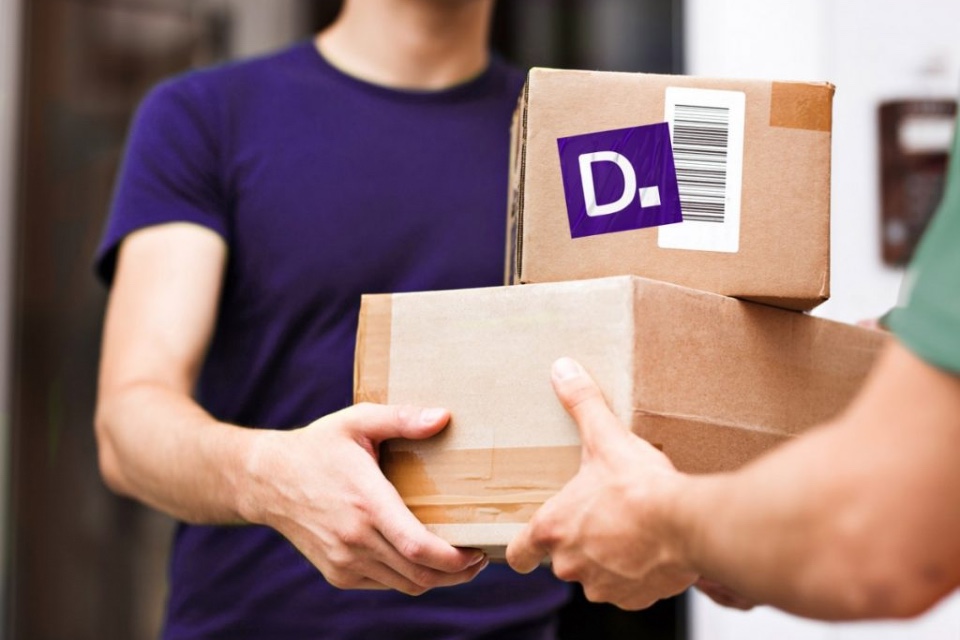One of the key reasons why Self-Service Kiosks (SSKs) are so high up the priority list for many Posts and Carriers is that the automated journey delivers a great customer experience whilst reducing dependency on staff. They are also a lot smaller than parcel lockers, which allows them to fit into places that other drop-off solutions cannot – and which until now might have seemed off-limits to carriers. So, kiosks can open a range of new locations and hence new host partnerships for carriers, allowing them to further expand their out-of-home networks.
At the same time, a new set of retail businesses can benefit from ecommerce returns and consumer-to-consumer parcel sends, drawing in consumers with returns drop-off and sending services, and turning that increased footfall into new customers and new sales opportunities.
By implementing a kiosk, new hosts will gain access to the fundamental pick up/drop off (PUDO) host partner benefits of increased footfall and the subsequent boost in revenue. However, being small, flexible and completely self-service, kiosks also provide added benefits of limited staff involvement and adaptability for smaller retail spaces that aren’t suited to traditional PUDO.
For the consumer, having more locations and increased drop-off density will make it easier and more convenient for them to use, improving the overall experience. Increased density will also increase the speed at which consumers return their items, meaning they’ll get back to the retailer and up for resale faster. In terms of sustainability, there’s also strong evidence that the closer drop-off points are to consumers, the higher the likelihood they’ll access it in environmentally friendly ways.
In a recent roundtable, Kris De Schepper, VP of Sales at bpost, said that when PUDO points were within ‘slipper distance’ to consumers (around 500m), 80% of them were accessed by bike or on foot. However, even if kiosks are not within ‘slipper distance’ of consumers, placing them in more diverse locations will increase the likelihood that consumers will access them as part of a chain trip or already existing journey. Diversifying drop-off locations will ultimately help them to fit more naturally into consumers’ daily lives, improving the overall experience.
Location option #1: cafés and coffee shops
Cafés and coffee shops could be an ideal location for kiosks – they’re used by millions of people on a daily basis, and they’re all across the land in the middle of urban centres.
Adding returns to a location ingrained in shoppers’ routines makes adoption a more natural process – they go for their regular coffee and complete their returns while waiting for their drink to be made. Traditionally, cafés wouldn’t have worked as PUDO locations for two reasons: a lack of square footage to store parcels and a lack of staff capacity. Kiosks solve both challenges. As they are self-service, consumers can use them to process the returns without taking time away from busy staff. Secondly, the kiosk is small and flexible, allowing hosts to place it in free space within the seating area away from the counter, bringing more footfall into stores without blocking up the counter queue. Using kiosk technology would be a natural progression for coffee shops, as many big brands are already using self-service technology in-store.
Location option #2: fast food restaurants
The same principles apply to fast food restaurants, where consumers could drop off their returns while waiting for their food. Fast food restaurants are also typically willing to implement self-service technology, with ordering kiosks becoming commonplace in many locations.
Location option #3: universities
Universities are an excellent kiosk location option thanks to the thousands of students that live on and travel to the campus every day. That’s a lot of foot traffic, from people who are statistically some of the most likely to order things online (and then decide to return them).
In places of high volume, bigger kiosks units can be deployed with larger storage bins, meaning they don’t have to be emptied as often. In short, the kiosks can be customised to suit the environment they’re in.
Location option #4: gyms
Despite the brief switch to home workouts, one study has shown that members are coming to the gym more than they were pre-pandemic, with visits per subscriber per month 10%-15% higher than two years ago. Carrier networks always benefit from proximity to places where consumers habitually are, so they don’t need to go out of their way to access a collection or drop-off point. It could be particularly powerful for carriers with major sports apparel and athleisure retailers on their books.
For the gym, parcel drop-off becomes an extra service to encourage more usage and renewals, making them an overall stronger proposition with convenient services.
Carriers need to take the lead to diversify the types of locations where shoppers can drop off returns and sends. For that to happen, they need to make the most of the kiosk format, and to make retailers, gyms, coffee shops, universities, and more host locations aware of the power of online returns and parcel sends to add value to their locations and drive new revenue in their businesses. Those who move first will have the advantage of picking the best and most valuable of these new location types; as well as the benefits of expanding their network and driving more consolidated returns volume.








